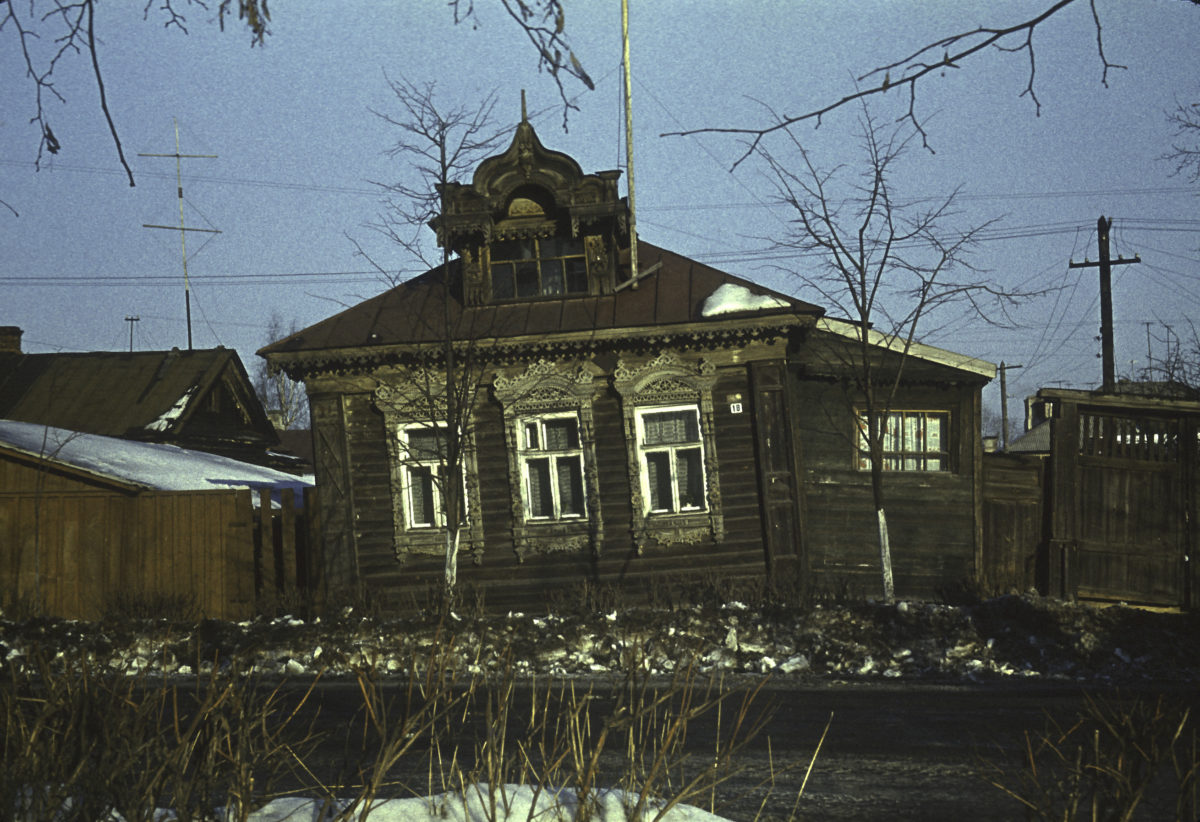In January of 1973, I took an overnight trip with a group of other American exchange students to a couple of the old Russian towns to the northeast of Moscow. Our first stop was Rostov. There are at least two cities in Russia named Rostov. One is way south of Moscow, on the Don River. It is usually called Rostov-na-Donu “Rostov-on-the-Don” to distinguish it from the other one, which is called “Rostov Veliky” (Rostov the Great). Confusingly, Rostov the Great is a small provincial town of around 30,000 people in the hinterland of Moscow, while Rostov on the Don is a major city of over a million people, close to the Sea of Azov. But it was not always so. Rostov Veliky is one of the oldest of all Russian towns, already an important settlement in 862, according to the Russian Primary Chronicle. At one time it was the capital of the Vladimir-Suzdal principality, although it later yielded that status first to Suzdal and then to Vladimir. Like the other old Russian towns, it was eclipsed and swallowed up by Moscow (1474); it also suffered greatly from the Mongol invasions and the wars with the Poles in the 17th century. But it remained an important ecclesiastical center down through the 18th century. In the 16th century, when the Metropolitan Bishop of Moscow was elevated to the status of Patriarch, the Bishop of Rostov was promoted to Metropolitan rank.
When we arrived in Rostov by train on a cold January morning, the town was shrouded in fog. The fog eventually lifted, but it remained for the most part a dreary, overcast day. But as we stumbled and groped our way from the railroad station through the center of town, suddenly there loomed up before us the Rostov Kremlin, a magnificent sight.
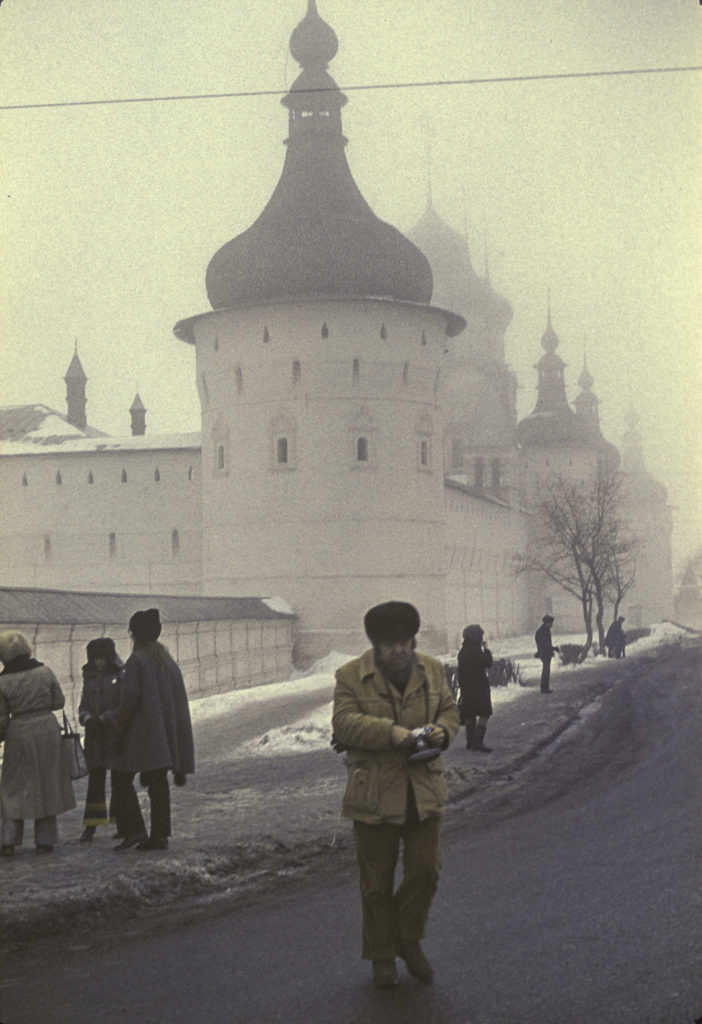
The Rostov Kremlin, unlike most of the kremlins in other old Russian cities such as Moscow, was never intended as a defensive work. It was built in the later 17th century, long after the depredations of the Mongols and Poles had ceased, by the then Metropolitan of Rostov, Jonah Sysoevich, a protege of the great Muscovite church reformer Patriarch Nikon, as a statement of the importance and grandeur of the Rostov archbishopric. His residence inside the Kremlin was the Krasnaya Palata – “Red Chamber” – which is now a museum.
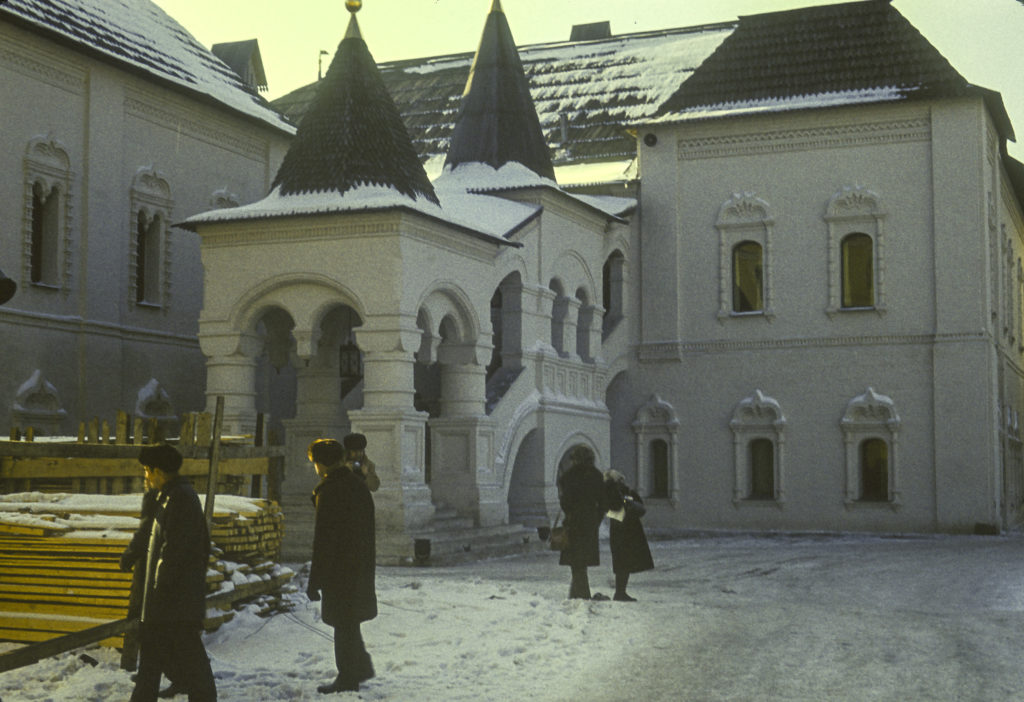
The main cathedral of the Rostov Kremlin is the Uspensky Sobor, or Cathedral of the Assumption, which resembles its counterpart in the Moscow Kremlin. Together with the Bell Tower and other structures, it presents an impression of a coherent architectural ensemble. But the construction of the original cathedral greatly predates that of the other structures. It was begun in the mid-12th century, rebuilt in the 1220s, just before the Mongol invasion (1237), again in the 1480s and yet again in 1512; and possibly further enhanced in the 1580s. The flaring onion domes were added in the late 17th century, replacing earlier low hemispherical cupolas to match the new structures built by Jonah Sysoevich. One of these was the Bell Tower. It has four bells, the largest of which weighs 35 tons; together with the three smaller bells, each of which is of a different size and has a different timbre, it constitutes a musical instrument sui generis, with a distinctive “Rostov sound.”
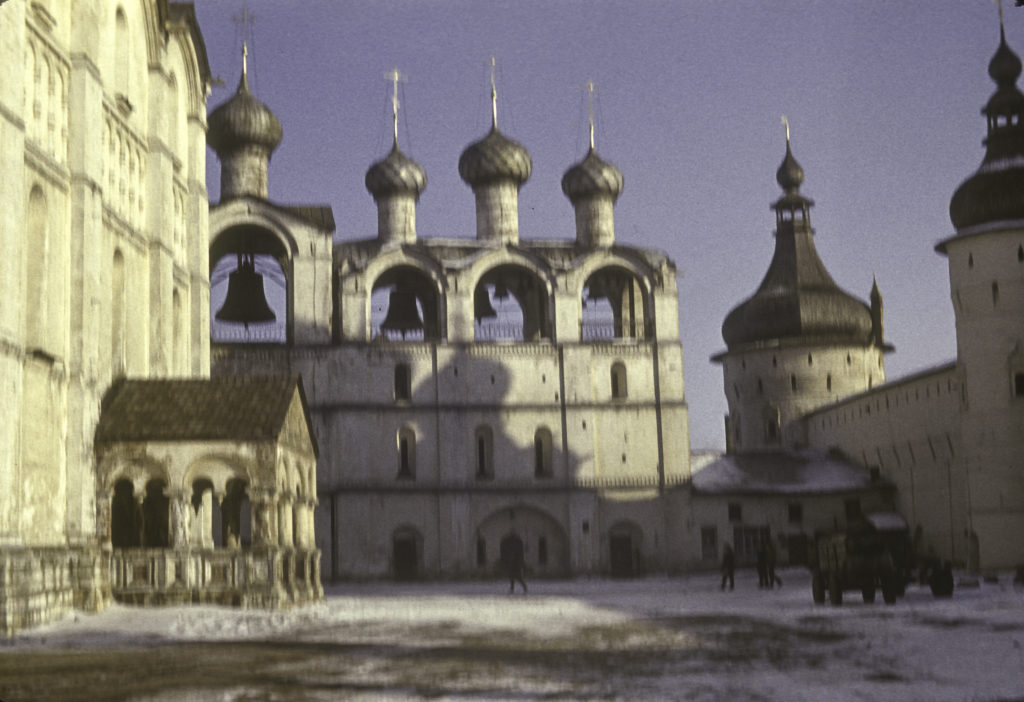
Another component of the architectural ensemble is the Resurrection Church, built in 1670 at the main gate of the compound.
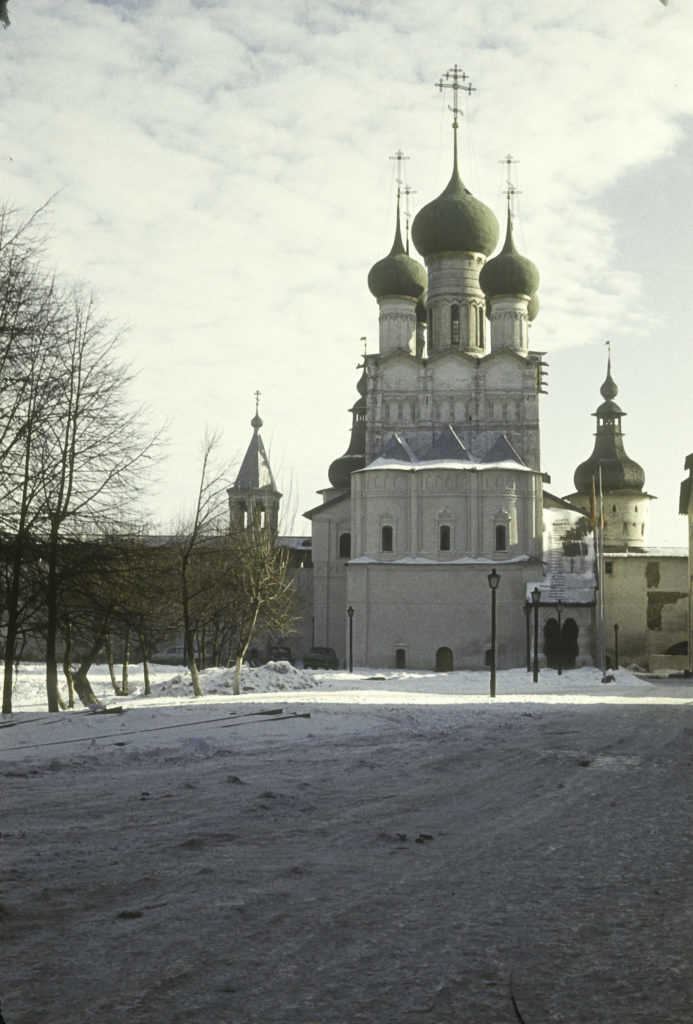
Yet another church, the Hodegetria, clashes with the style of the others; an example of the Moscow Baroque style, it is rectangular in shape, with but one dome, and an exterior decorated with diamond-shaped cladding (this is called the “diamond rust” technique).
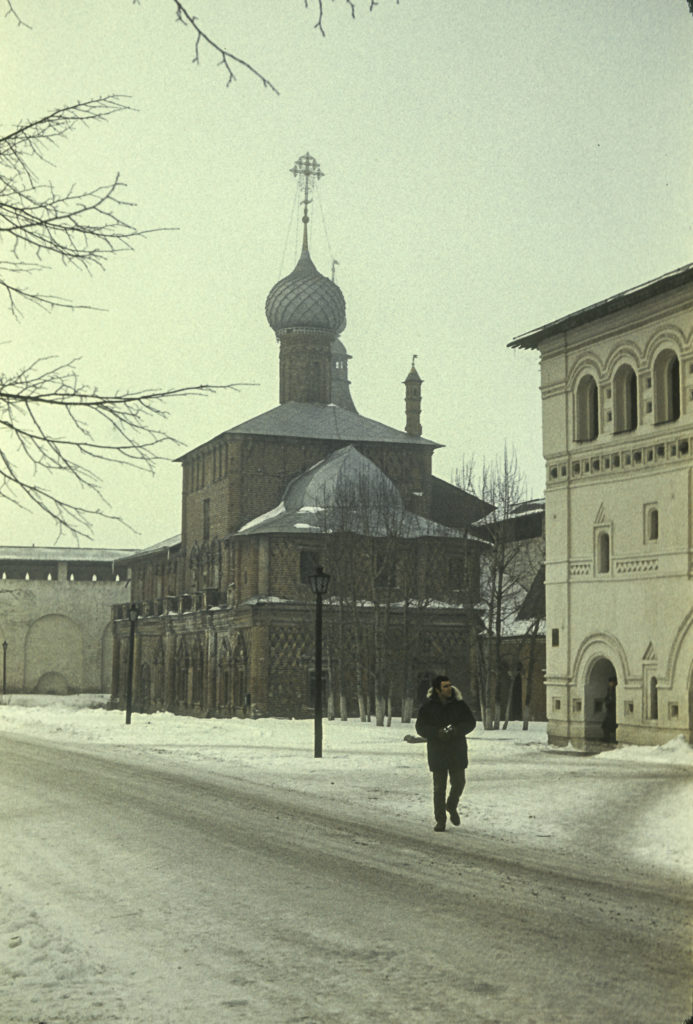
Leaving the Kremlin, we retraced our steps back through town to the train station. By this time the fog had dissipated and the sun was beginning to shine weakly on the snowy streets.
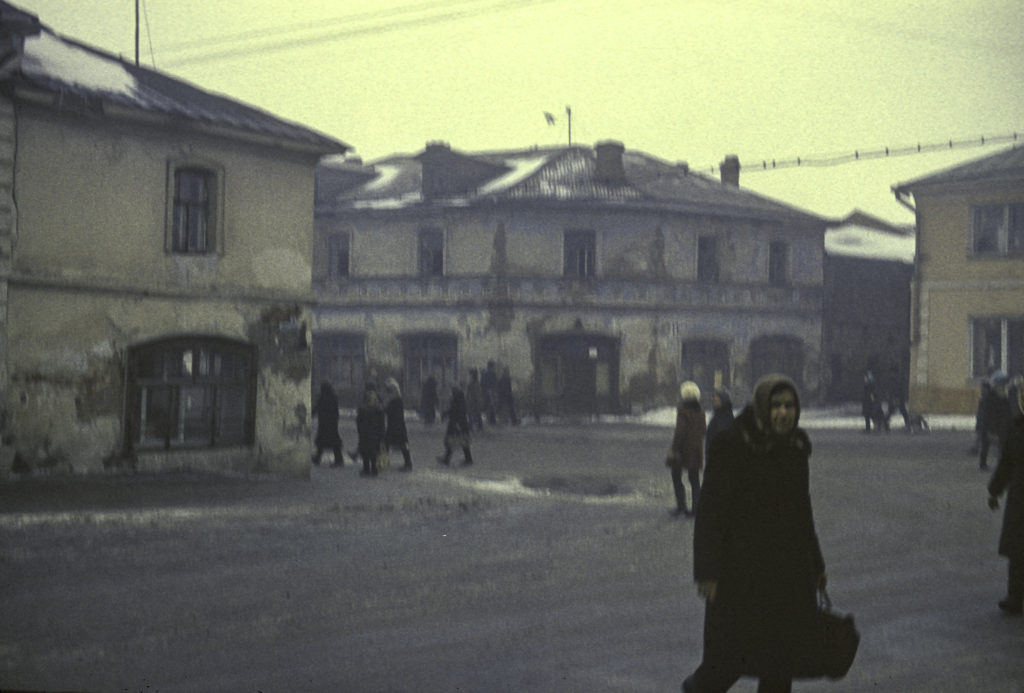
Traipsing through the downtown area, we shortly reached the residential district. By this time it was afternoon and there were a number of citizens strolling the streets, some of them pushing prams with children.
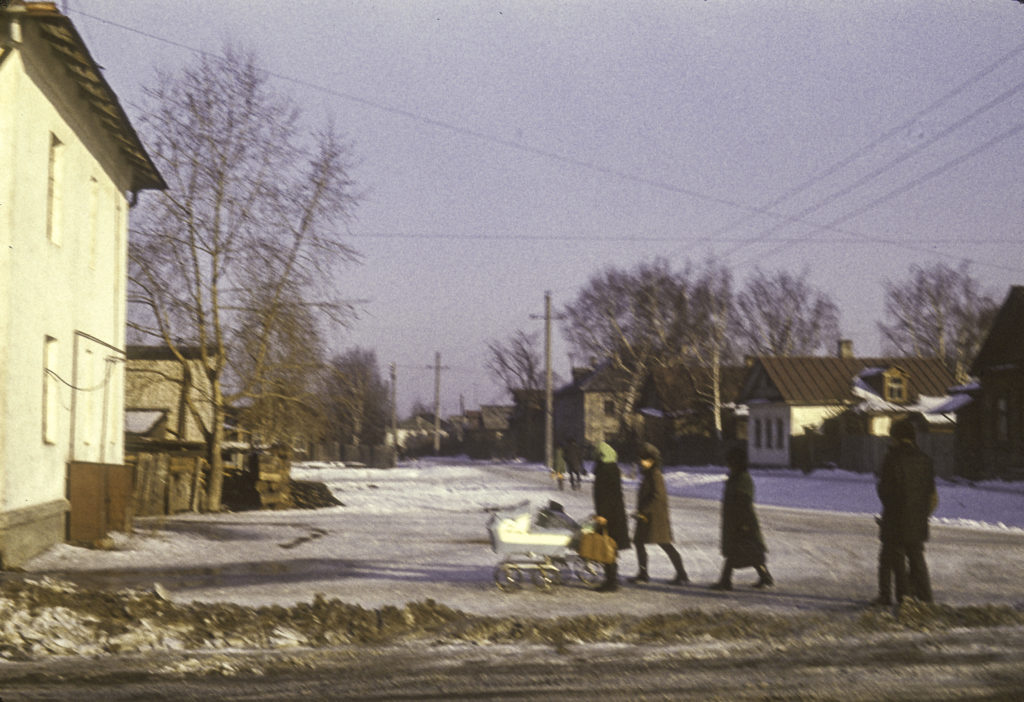
For some of us, it was our first look at a small provincial town in Russia. Wooden houses, many of them apparently built in a traditional style dating from before the 1917 revolution, predominated. Not a few of them were decorated with elaborately carved wooden window frames, which I found quite charming. Picket fences were also ubiquitous.
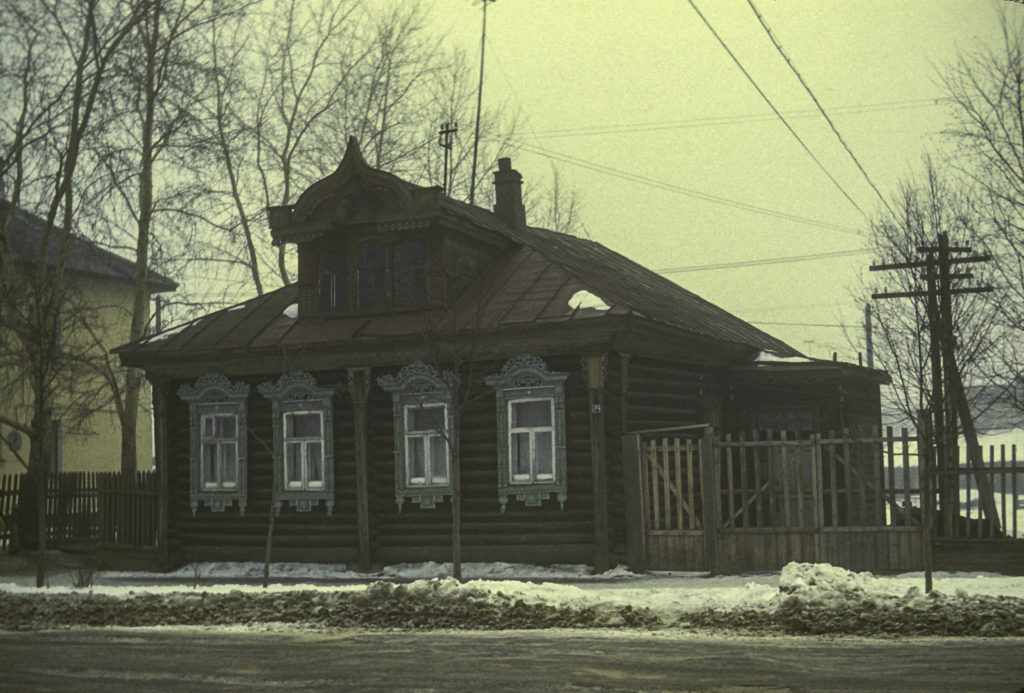
All of the houses seemed to have tall TV antennae, but they evidently lacked something I would consider still more essential: running water. This was apparent from the pumps that people clustered round to fill their buckets of water. I didn’t realize it at the time, having lived in Southern California most of my life, how much more of a luxury it is to have running water in a cold climate than in a warm one. A year or so later, after returning to the USA, I found out from a friend who was building houses in Connecticut that pipes in cold country have to be wrapped in electrical conduit to keep them from freezing and bursting in the winter. And of course the pipes have to be laid in the first place in the summer, when the ground isn’t too hard or too muddy to dig up.
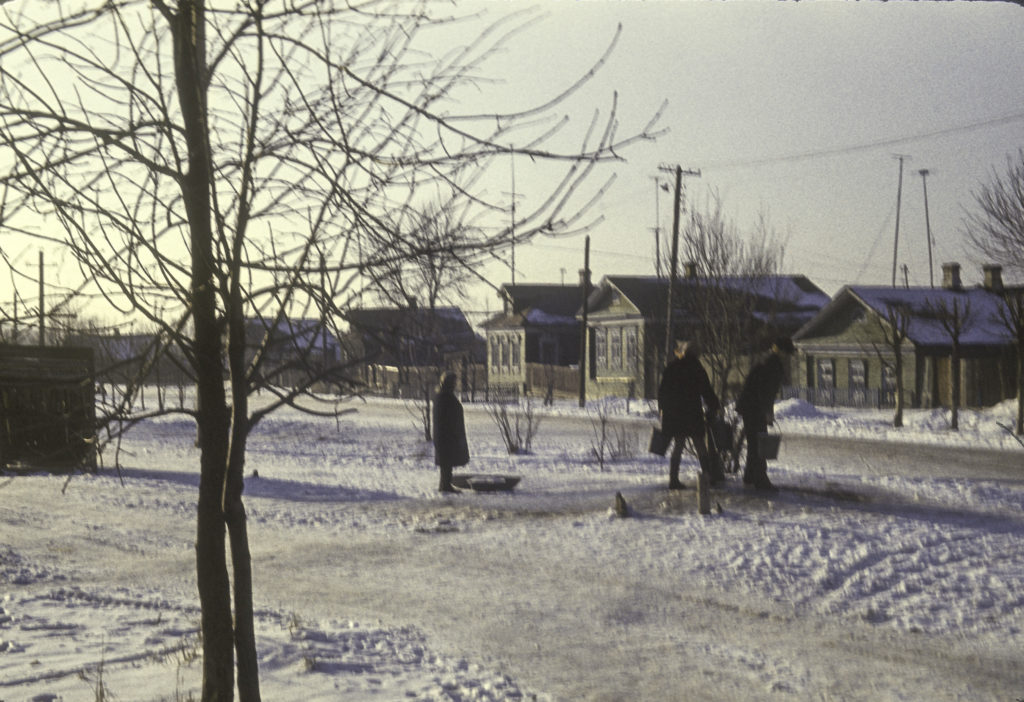
I was especially struck by this one modest dwelling which I called “the leaning cottage of Rostov” from its tippy appearance. When we were shooting pictures of this and the other wooden houses, some of the locals came up to us and said, “Don’t shoot pictures of the houses. The houses are bad. Shoot pictures of the school instead – it’s nice.”
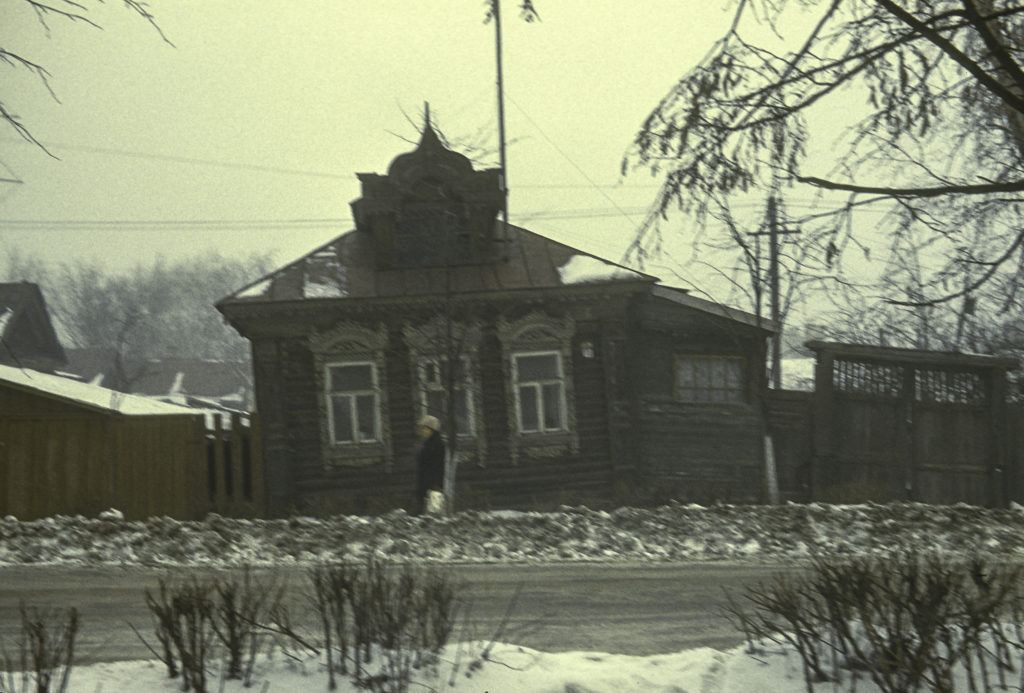
But we found the cottages, however humble, authentic and picturesque, while the school was quite ordinary and boring.
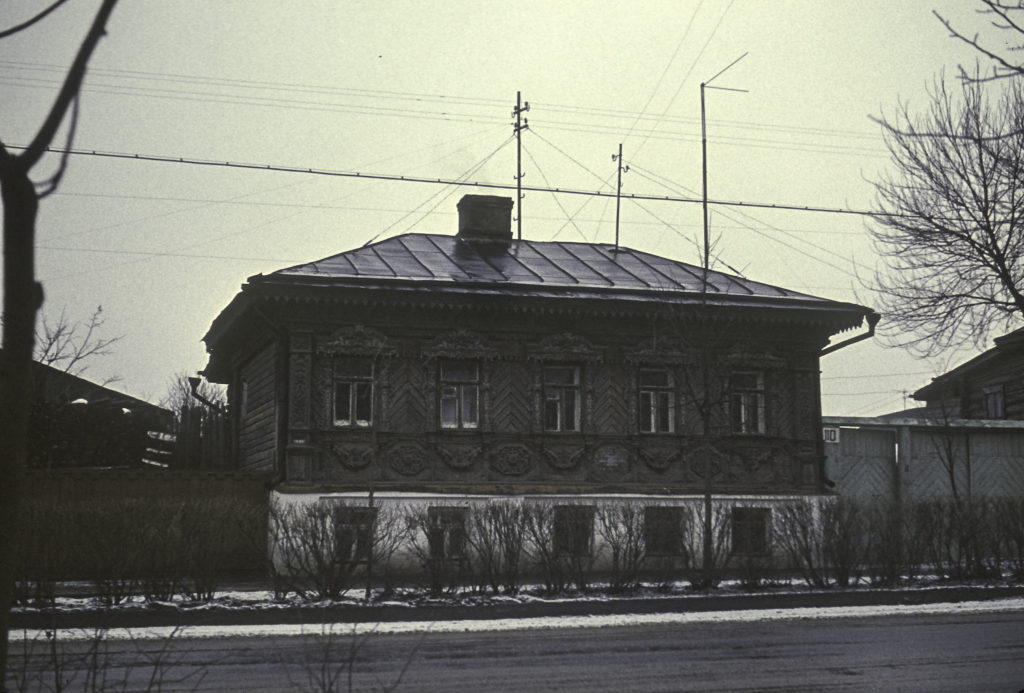
There were also some more modern and pretentious houses of more recent vintage, most likely belonging to the local notables.
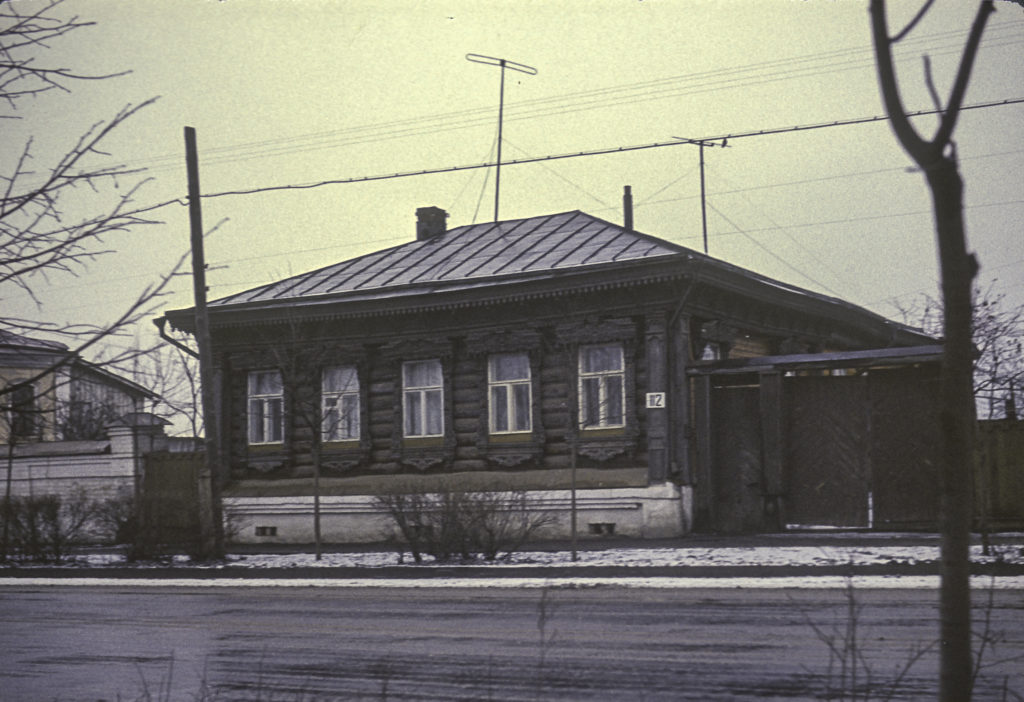
After blundering about in the snow for a while, and exploring the town in the pale light of a winter afternoon, we finally reached the station and boarded the train for Yaroslavl.
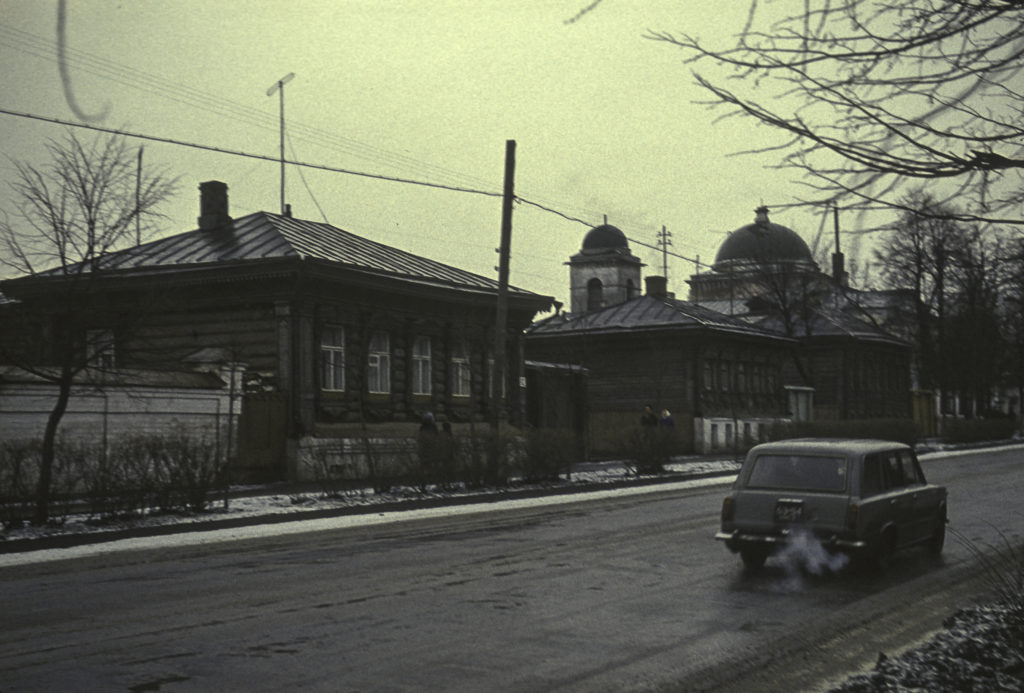
I think Rostov – like most of the Golden Ring towns – is now much changed from when I was there. The impressions I have obtained from the websites that I have seen, such as Top 10 Travel and Russia Beyond, suggest that the provincial standard of living has considerably improved and that the historical monuments have been restored to a degree that was inconceivable under the Soviet regime. To what degree these impressions are correct I can only speculate, until I have a chance to return to the sites that I visited back in the dark age of 1973.
